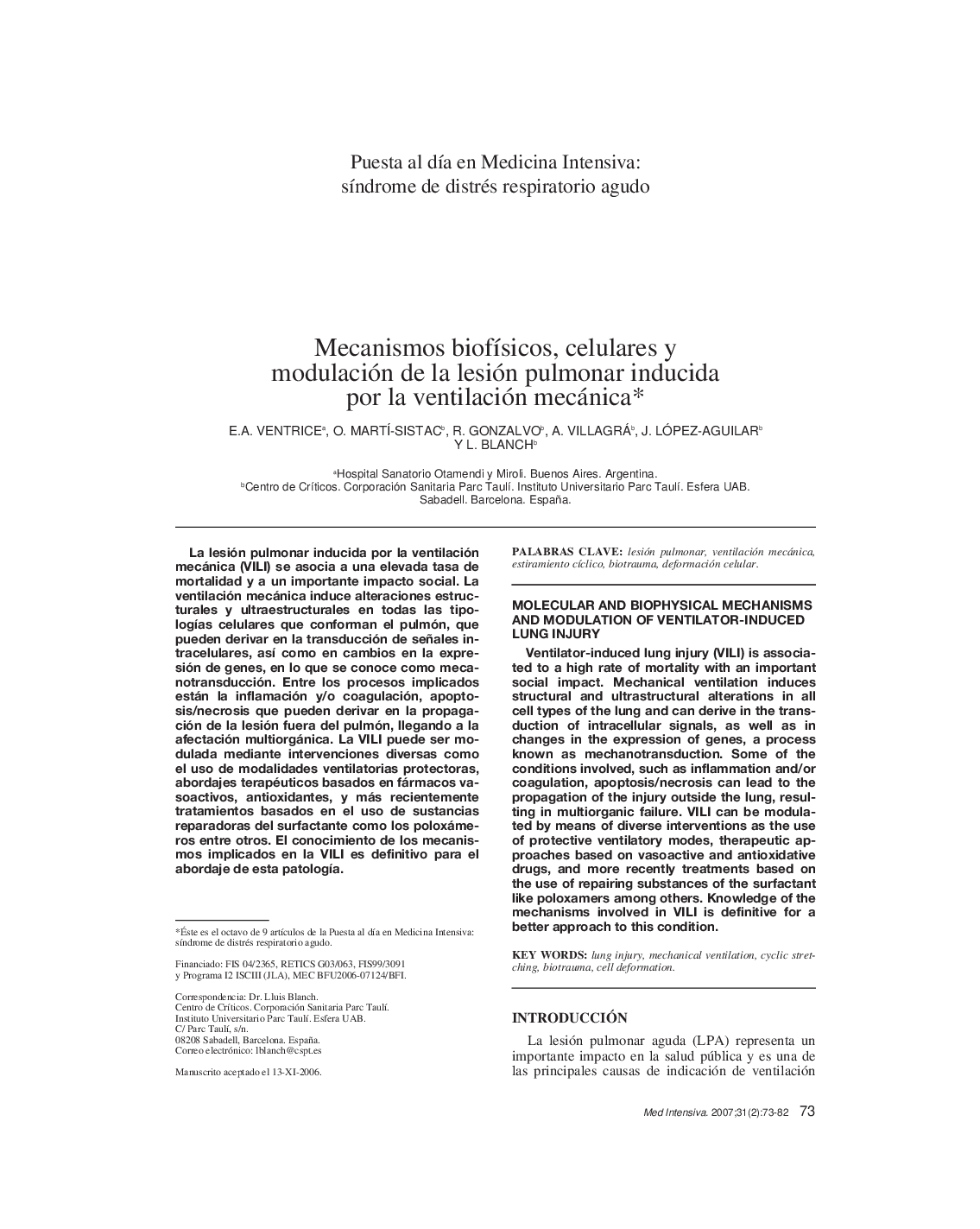| Article ID | Journal | Published Year | Pages | File Type |
|---|---|---|---|---|
| 3113831 | Medicina Intensiva | 2007 | 10 Pages |
Abstract
Ventilator-induced lung injury (VILI) is associated to a high rate of mortality with an important social impact. Mechanical ventilation induces structural and ultrastructural alterations in all cell types of the lung and can derive in the transduction of intracellular signals, as well as in changes in the expression of genes, a process known as mechanotransduction. Some of the conditions involved, such as inflammation and/or coagulation, apoptosis/necrosis can lead to the propagation of the injury outside the lung, resulting in multiorganic failure. VILI can be modulated by means of diverse interventions as the use of protective ventilatory modes, therapeutic approaches based on vasoactive and antioxidative drugs, and more recently treatments based on the use of repairing substances of the surfactant like poloxamers among others. Knowledge of the mechanisms involved in VILI is definitive for a better approach to this condition.
Keywords
Related Topics
Health Sciences
Medicine and Dentistry
Critical Care and Intensive Care Medicine
Authors
E.A. Ventrice, O. MartÃ-Sistac, R. Gonzalvo, A. Villagrá, J. López-Aguilar, L. Blanch,
